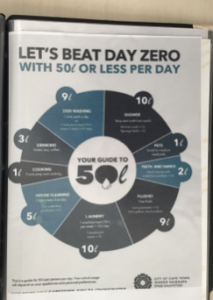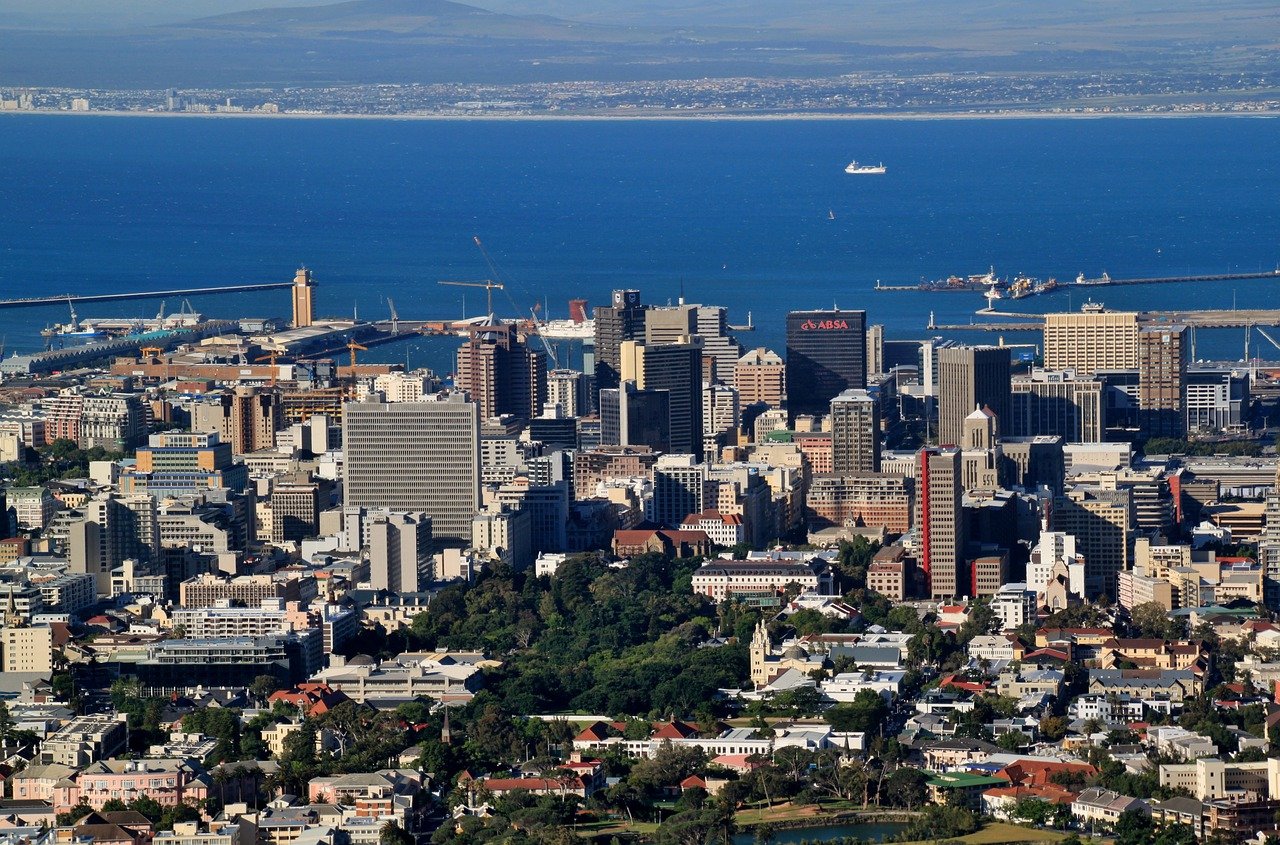Rogers Mesa Domestic Water Company
Quarterly Membership Newsletter
November 2018
Cape Town, South Africa, airport. We’re standing in the slow-moving queue at Customs. The overhead screen alternates between restrictions on importation of agricultural products and the admonition to help the city avoid “Day Zero” — the day it might run entirely out of water. We are urged to use not-more-than 50 liters of water a day.
Now, that’s sobering to contemplate on the first day of our visit to our daughter. She chooses to live in this bustling, cosmopolitan, coastal, international city on the Southern-most tip of Africa; so very far from Rogers Mesa. We occasionally get to visit as winter sets-in at home and summer gets underway in the Southern Hemisphere. We’re on vacation; not prepared to be adjusting to water restrictions.
The question-I-didn’t-know-I-had is answered at our hotel in the wine-making destination of Franschhoek: “What does 50-liters-of-water-a-day really mean?” Let’s start by rounding 1 liter to 1 quart; so 50 liters is about 4.25 gallons. Per person per day. Seems like a fair amount of water until you begin to list the water-consuming activities in our daily lives. The daily official brochure suggests:
 Dishwashing: 9 liters; 1 sink wash per day or 1 economy load every 3 days.
Dishwashing: 9 liters; 1 sink wash per day or 1 economy load every 3 days.
Shower: 10 liters; start/stop with hair wash; no hair wash 5 l; sponge bath 3 l.
Pets: 1 liter; small to medium-size pets.
Teeth & hands: 2 liters. Wash hands with waterless sanitizer = 0 l.
Flushes: 9 liters; 1 flush = 9 l. Use graywater = 0 l. “If it’s yellow let it mellow; if it’s brown…”
Laundry: 10 liters; 1 machine load = 70 liters so 1 load per week. Hand wash basin = 9 liters.
Housecleaning: 5 liters; clean every 2nd day.
Cooking: 1 liter for food prep & cooking.
Drinking: 3 liters for water, tea, coffee.
Fortunately these restrictions are voluntary — for now. And fortunately Spring rains have brought a respite in South Africa. But it wasn’t long ago that residents were contemplating the possibility of obtaining their daily water ration at a public tap presided-over by armed guards. I am reminded of this summer’s less-onerous (yet none-the-less real) water restrictions in Hotchkiss, Paonia, Grand Junction, and Aspen. And of my own nail-biting as recently as September which brought me increased awareness and gratitude for the reliable and safe water at my tap; though only modest personal efforts toward conservation.
Let’s take a moment to consider our extraordinary good fortune: RMDWC allows member-households to use up to 6,000 gallons per month for our base rate of $35. That’s about 200 gallons per day; or, for a family of four, 50 gallons-per-person-per-day. Ten times the amount the South African government postulates people should be able to get along on, even before mandatory rationing.
Scant rains in September and October returned our reservoirs to a normal level for this time of year and early snows further improved the outlook. But we’re far from out-of-the-woods. Delta County remains in the area of “exceptional” on the drought map. Climatologists have stopped using the word “drought” in favor of “aridification” in recognition that this is not simply a temporary condition. Climate change is bound to manifest as a long-term reduction in rain and snow in our part of the American West as it is in South Africa.
So at this time of giving thanks, let’s be grateful for our reliable and safe water supply and please demonstrate our gratitude by treating it as the precious, essential, and limited resource that it is. I urge that we be thoughtful and intentional every time we turn on the tap and that we get used to adopting water-conserving habits. Voluntarily, and as a community of members, we can continue to meet our responsible water needs and avoid draconian measures. It’s up to each and every one of us. Every time we turn-on the tap.
Thank you!

